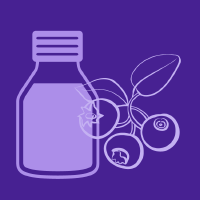Topic Menu
► Topic MenuTopic Editors


Advances in Hydrodynamic Cavitation Applications for Environment and Human Health
Topic Information
Dear Colleagues,
Controlled hydrodynamic cavitation methods and related technologies are increasingly recognized as comparatively more efficient, affordable, feasible, and straightforwardly scalable in many different technical fields in which the acceleration of physical, chemical, and biological reactions in fluid streams is necessary. The scope of this Topic concerns advanced applications of hydrodynamic cavitation with proven scalability up to the full scale and proven comparatively higher process yield, across at least the following fields:
- green extraction of natural products;
- creation of new, improved, or functionalized products for environmental protection and human health promotion;
- food preservation and enhancement;
- purification and disinfection of waste streams;
- enhancement of biogas, bioethanol, and biodiesel generation.
Further fields could be of interest, as long as they focus on the environment and human health. Raw materials, either primary products, byproducts, waste streams, or underutilized resources, should be generally available in fairly large quantities and concentrated, in order to pursue industrial application and really make a difference. The scope of this Topic further includes structural, physicochemical, biological, and functional analysis of the products and byproducts of the above-listed hydrodynamic cavitation applications and processes. New ideas about hydrodynamic cavitation devices and methods are also welcome, provided that clear advantages and straightforward upscaling are shown.
Dr. Federica Zabini
Dr. Francesco Meneguzzo
Topic Editors
Keywords
- bioactive compounds
- energy
- environmental protection
- food
- green extraction
- health
- hydrodynamic cavitation
- nutrients
- waste management
Participating Journals
| Journal Name | Impact Factor | CiteScore | Launched Year | First Decision (median) | APC |
|---|---|---|---|---|---|

Antioxidants
|
7.0 | 8.8 | 2012 | 13.9 Days | CHF 2900 |

Foods
|
5.2 | 5.8 | 2012 | 13.1 Days | CHF 2900 |

International Journal of Environmental Research and Public Health
|
- | 5.4 | 2004 | 29.6 Days | CHF 2500 |

Processes
|
3.5 | 4.7 | 2013 | 13.7 Days | CHF 2400 |

Energies
|
3.2 | 5.5 | 2008 | 16.1 Days | CHF 2600 |

MDPI Topics is cooperating with Preprints.org and has built a direct connection between MDPI journals and Preprints.org. Authors are encouraged to enjoy the benefits by posting a preprint at Preprints.org prior to publication:
- Immediately share your ideas ahead of publication and establish your research priority;
- Protect your idea from being stolen with this time-stamped preprint article;
- Enhance the exposure and impact of your research;
- Receive feedback from your peers in advance;
- Have it indexed in Web of Science (Preprint Citation Index), Google Scholar, Crossref, SHARE, PrePubMed, Scilit and Europe PMC.

